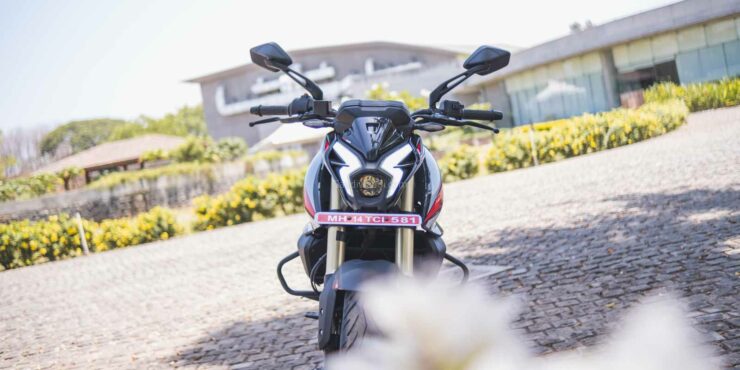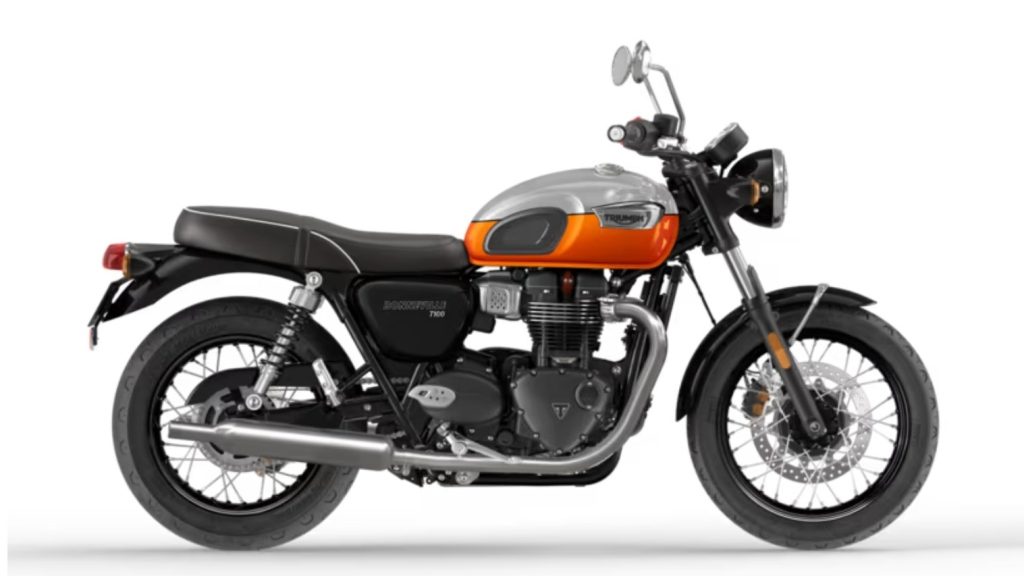Here’s a quick, no-nonsense look at what’s coming/just landed from Bajaj and its partner brands in India.
Bajaj has been steadily refreshing the Pulsar line. The updated Pulsar N250 keeps its 249 cc single but adds a modern feature set—Bluetooth-ready console, assist & slipper clutch, dual-channel ABS, and a 14 L tank—while continuing with 24.5 PS and 21.5 Nm, making it an easy everyday performer with a mildly sportier edge.
At the other end, the 2025 Pulsar NS400Z received a meaningful mid-cycle bump. It remains the most affordable 400 cc-class Pulsar, but now claims stronger performance (quicker 0–60 km/h and a higher top speed), plus a first-time quickshifter (Sport Shift), traction control, radial tyres, and a richer TFT experience. For riders who wanted a bigger-lunged Pulsar without big-bike pricing, this is the one to watch.
Sub-350 cc KTMs & Triumphs: Why They’re Coming
A major catalyst is the new GST structure for two-wheelers in India: sub-350 cc bikes now attract 18% GST (down from 28%), while >350 cc models face a steep 40% slab. This tilts the market sharply toward <350 cc motorcycles. In response, Bajaj—manufacturing partner for both KTM and Triumph in India—has confirmed development of downsized, sub-350 cc KTMs and Triumphs specifically to fit this friendlier tax bracket. Expect these bikes to target accessible pricing without sacrificing brand character.
On KTM’s current India slate, the Gen-3 250 Duke showcases where the “below-350” play can land: a lighter package with updated LC4c engine internals (about 31 PS/25 Nm), improved gearbox, and a far more polished ride/feature mix than earlier. KTM has also been rolling out MY2025 tweaks across the 200/250/390 lines and the 250 Adventure, so it’s logical that future <350 cc projects will borrow that electronics and chassis know-how.
For Triumph, the successful, India-made Speed 400 and Scrambler 400 X have proven Bajaj–Triumph’s capability. A purpose-built sub-350 cc Triumph family would let the brand retain its premium design language while qualifying for the lower GST—think classic Triumph styling with scaled engines and smart feature curation to hit reachable price points. (Bajaj’s public signals about sub-350s strongly suggest exactly this path.)
The New Chetak(s)
Bajaj’s EV push is gathering pace with the Chetak 35-series and a new entry variant, the Chetak 3001, priced to bring more buyers into the fold. Positioned below the 3501/3502/3503 trims, the 3001 lowers the barrier without diluting the core Chetak proposition of sturdy build, clean design, and app-connected convenience.
Deliveries commenced mid-2025, and the broader lineup now spans multiple “35-series” options so buyers can choose range/feature mixes to taste.
What This Means For Indian Riders
- Value Moves Below 350 cc: With 18% GST, expect a wave of credible, fun machines that are easier to finance and own. Bajaj’s strategy with KTM and Triumph should seed multiple choices across naked, neo-retro, and ADV formats.
- Feature Trickle-Down: Quickshifters, TFTs, ride modes, and connectivity—once 390-class or higher—are landing on more affordable bikes (see NS400Z and the latest 250 Duke).
- EVs Get Broader, Not Just Pricier: The Chetak 3001 shows Bajaj is adding lower entry points even as it expands the lineup, an encouraging sign for urban commuters eyeing their first EV.
Summary
If you’re shopping in late 2025 and into 2026, keep the refreshed Pulsar N250 and the upgraded NS400Z on your petrol shortlist, and watch for those sub-350 cc KTM and Triumph announcements—they’re being engineered for India’s new tax reality. For city scooting, the expanded Chetak range—especially the 3001—makes the switch to electric simpler and cheaper than before.



